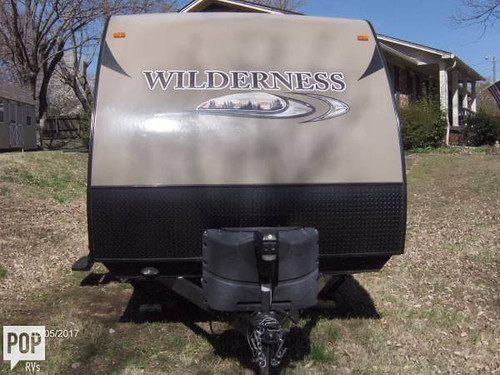this pathway. Since JNK1 has been shown to play a role in T cell survival, the impact of JNK1 deletion on T cell populations in the lung following viral infection was assessed. JNK1 2/2 mice displayed similar ratios of CD4, CD8, cdT, and NKT cells as WT mice. These data suggest that JNK1 2/2 mice have appropriate T cell responses to Influenza A infection. JNK1 is required for IL-17A signaling in vitro and in vivo The IL-17 pathway has recently been implicated in host defense against a number of both intra- and extra-cellular pathogens. IL17A is known to be required for host defense and inflammation in response to gram-negative and gram-positive bacteria, as well as Influenza A  infection. In models of bacterial pneumonia IL-17R signaling or IL-17A is required for pathogen clearance. In contrast in Influenza A infection, IL-17R signaling is dispensable for viral clearance, but is required for morbidity and lung injury. Since JNK1 has a role in these infection paradigms and JNK1 2/ 2 mice had a trend towards decreased IL-17A production, the role of JNK1 in IL-17A signaling was investigated. ” First, to confirm that IL-17A stimulates JNK1 activity, mouse tracheal JNK1 and Host Defense epithelial cells were treated with IL-17A and JNK1 phosphorylation of c-Jun was determined. IL-17A induced rapid activation of JNK1 as early as fifteen minutes after stimulation. IL-17A is known to stimulate inflammatory cytokine and antimicrobial peptide production by epithelial cells. WT and JNK1 2/2 MTEC were stimulated with IL-17A for one day and cytokines were measured by multiplex cytokine assay and RTPCR. IL-17A induced KC and MIP-2 protein and mRNA as well as decreased IP-10 protein were significantly decreased in JNK1 2/2 MTEC compared to WT cells. Surprisingly, JNK1 2/2 MTEC had increased G-CSF mRNA, but no change in protein compared to WT cells, upon stimulation with IL-17A. These data demonstrate that JNK1 is required for IL17A pro-inflammatory signaling in vitro. In addition, JNK1 2/2 MTEC expressed significantly decreased levels of the antimicrobial peptides S100a8 and Defb4 compared to IL-17A stimulated WT MTEC. Taken together, the data suggest that IL17A signals through JNK1 to induce inflammation and Luteolin 7-glucoside enhance host defense. Since JNK1 was shown to play a role in IL-17A signaling in vitro in epithelial cells, the impact of JNK1 deletion on IL-17A signaling in vivo was investigated. WT and JNK1 2/2 mice were challenged with adenovirus expressing IL-17A for three days. Adenoviral IL-17A induced similar levels of IL-17A protein in the lung; 4088.161069.5 pg/ml in WT mice and 4009.46459.0 pg/ ml in JNK1 2/2 mice. The total numbers of inflammatory cells in the BAL were similar in WT and JNK1 2/2 mice, however, JNK1 2/2 mice had significantly increased macrophage and decreased neutrophil recruitment. In addition to altered cellular infiltrate profiles, JNK1 2/2 mice produced significantly decreased MCP-1 and IFNc compared to WT mice. The adenoviral expression approach utilized introduces the potential caveat of a differential viral response in the WT and JNK1 2/2 mice. To further examine IL-17A signaling in vivo, WT and JNK1 2/2 mice were instilled with recombinant mouse IL-17A for one day. IL-17A induced significantly decreased MCP-1 and G-CSF production, as well as a trend towards lower IP-10 and IFNc, in JNK1 2/2 mice versus WT mice. Furthermore, JNK1 2/2 mice stimulated with 9856955 IL-17A demonstrated a trend towards decreased antimicrobial peptides S100a8
infection. In models of bacterial pneumonia IL-17R signaling or IL-17A is required for pathogen clearance. In contrast in Influenza A infection, IL-17R signaling is dispensable for viral clearance, but is required for morbidity and lung injury. Since JNK1 has a role in these infection paradigms and JNK1 2/ 2 mice had a trend towards decreased IL-17A production, the role of JNK1 in IL-17A signaling was investigated. ” First, to confirm that IL-17A stimulates JNK1 activity, mouse tracheal JNK1 and Host Defense epithelial cells were treated with IL-17A and JNK1 phosphorylation of c-Jun was determined. IL-17A induced rapid activation of JNK1 as early as fifteen minutes after stimulation. IL-17A is known to stimulate inflammatory cytokine and antimicrobial peptide production by epithelial cells. WT and JNK1 2/2 MTEC were stimulated with IL-17A for one day and cytokines were measured by multiplex cytokine assay and RTPCR. IL-17A induced KC and MIP-2 protein and mRNA as well as decreased IP-10 protein were significantly decreased in JNK1 2/2 MTEC compared to WT cells. Surprisingly, JNK1 2/2 MTEC had increased G-CSF mRNA, but no change in protein compared to WT cells, upon stimulation with IL-17A. These data demonstrate that JNK1 is required for IL17A pro-inflammatory signaling in vitro. In addition, JNK1 2/2 MTEC expressed significantly decreased levels of the antimicrobial peptides S100a8 and Defb4 compared to IL-17A stimulated WT MTEC. Taken together, the data suggest that IL17A signals through JNK1 to induce inflammation and Luteolin 7-glucoside enhance host defense. Since JNK1 was shown to play a role in IL-17A signaling in vitro in epithelial cells, the impact of JNK1 deletion on IL-17A signaling in vivo was investigated. WT and JNK1 2/2 mice were challenged with adenovirus expressing IL-17A for three days. Adenoviral IL-17A induced similar levels of IL-17A protein in the lung; 4088.161069.5 pg/ml in WT mice and 4009.46459.0 pg/ ml in JNK1 2/2 mice. The total numbers of inflammatory cells in the BAL were similar in WT and JNK1 2/2 mice, however, JNK1 2/2 mice had significantly increased macrophage and decreased neutrophil recruitment. In addition to altered cellular infiltrate profiles, JNK1 2/2 mice produced significantly decreased MCP-1 and IFNc compared to WT mice. The adenoviral expression approach utilized introduces the potential caveat of a differential viral response in the WT and JNK1 2/2 mice. To further examine IL-17A signaling in vivo, WT and JNK1 2/2 mice were instilled with recombinant mouse IL-17A for one day. IL-17A induced significantly decreased MCP-1 and G-CSF production, as well as a trend towards lower IP-10 and IFNc, in JNK1 2/2 mice versus WT mice. Furthermore, JNK1 2/2 mice stimulated with 9856955 IL-17A demonstrated a trend towards decreased antimicrobial peptides S100a8